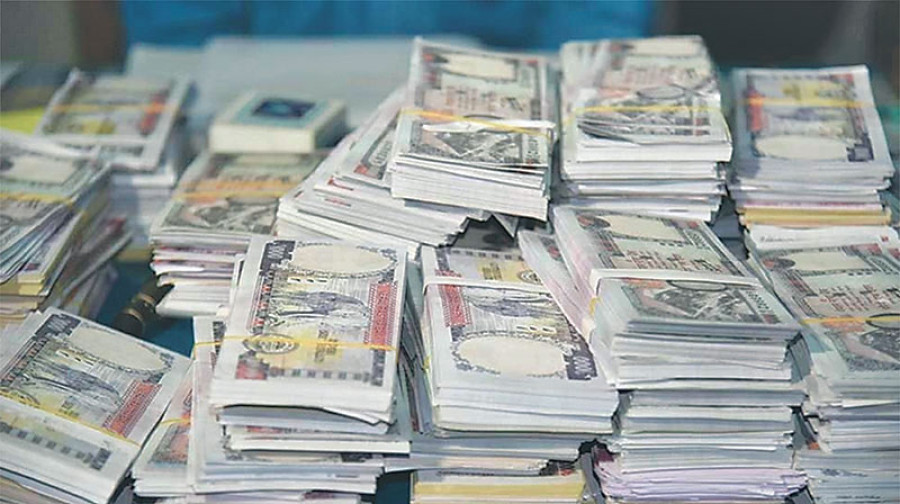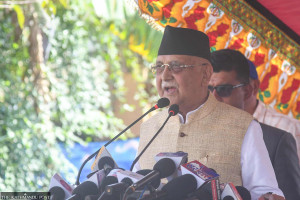Money
Rupee slide raises debt repayment costs
If Nepal settles all of its foreign loans now, it will incur a loss of nearly Rs60 billion.
Prithvi Man Shrestha
As the Nepali rupee continues to lose its value against the US dollar, Nepal has been forced to pay more in the domestic currency to foreign creditors in recent years.
In the last fiscal year 2022-2023 that ended in mid-July, the country suffered a foreign exchange loss of nearly Rs60 billion as the local currency plunged against the US dollar, Public Debt Management Office (PDMO) said in its Annual Report 2022-2023.
The value of the Nepali currency plunged to 131.77 per US dollar on July 16, 2023, the last day of the last fiscal year, from 128.11 on July 17, 2022, the first day of the last fiscal year, according to Nepal Rastra Bank.
Along with rising external and domestic debt, the country’s debt obligations to creditors has been rising steadily. As debt servicing should be done in foreign currency to the external creditors, fluctuations in the exchange rate directly affects the country’s debt liability in the domestic currency.
Dilaram Giri, information officer at the PDMO said that a foreign exchange loss of Rs59.15 billion does not mean that the country was forced to pay equivalent amounts in the last fiscal year.
“This loss was calculated based on the outstanding external debt of the country,” said Giri. “A certain portion of the debt was repaid in the last fiscal year, and due to the depreciation of the rupee against the dollar, the country had to allocate additional funds for debt repayment.”
With the rupee consistently losing its value against the dollar, Nepal has hardly made any foreign exchange gains in recent years.
Nepal suffered foreign exchange losses totalling Rs72.16 billion in the fiscal year 2019-2020, followed by an additional Rs7.42 billion in the fiscal year 2020-2021. But in the 2021-2022, the country made a gain of Rs 12.51 billion. “However, most of the time, Nepal faces foreign exchange losses in the repayment of its external debt,” said Giri.
The country’s total external debt at the end of fiscal year 2022-2023 stood at Rs1.17 trillion, which accounts for 21.75 percent of Nepal’s total gross domestic product (GDP). Nepal’s external debt liability was only Rs388.76 billion in fiscal year 2015-2016. Overall, Nepal's debt liability at the end of last fiscal year stood at 42.73 percent of its GDP, the PDMO said.
When Nepali currency weakens against the dollar, it leads to increased remittances inflows in rupee terms. However, it also results in a higher outflow of rupees from the country to repay debts and fund imports.
As Nepal’s external debt continues to grow, the country is exposed to an increased exchange rate risk.
When the country was hit by deadly earthquakes in 2015, Nepal’s debts, both external and internal, surged as the country had to spend huge amounts of money on the reconstruction of its damaged infrastructure. More resources were needed to manage the newly-created structures for the implementation of federalism and address the Covid pandemic.
The World Bank, however, said in its latest Nepal Development Update released this month that the depreciation of the Nepali currency against the US dollar in the last fiscal year didn’t have a big impact on Nepal’s external debt and repayments.
“Although Nepal’s external debt is largely denominated in convertible currencies, the 8.3 percent depreciation of the Nepali currency against the US dollar during fiscal year 2022-2023 did not have a large impact on either the external debt amortisation or interest repayments,” it added.




 18.12°C Kathmandu
18.12°C Kathmandu














